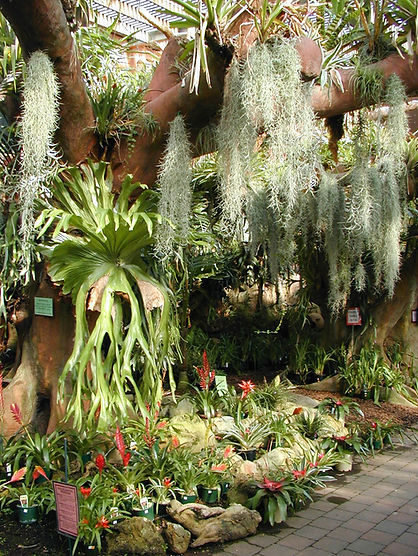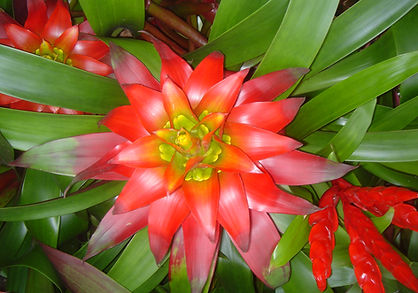

Bromeliads
Bromeliads are a unique and wondrous group of plants found mostly in the New World. There are 51 genera with over 3400 species and thousands of cultivars.
Bromeliads have adapted to fill a niche in their habitats that is ideally suited for their existence very much like orchids. They have adapted to all climates from tropical forests to deserts, from barren cliff faces to the tops of the tallest trees. Bromeliads are the only plant know to be able to grow on electrical power lines.
Bromeliads are also unique to the plant kingdom in many ways, the best known is their incredible diversity of flower types, mostly appearing from inflorescense that come in a huge range of shapes and sizes. All bromeliads produce a single inflorescense when mature, this mother plant will cease to grow and will only produce young plants to produce the next generation of flowers.
Bromeliads have root systems but rely mostly on their leaves to supply food and water, some have complex root systems whilst others just enough to hold the plants in place. Terrestrial Bromeliads grow much like normal plants but epiphytes have adapted other means to provide food and water. Many Bromeliads have specially adapted cells on their leaves that can collect water and nutrients called trichomes. Some varieties trap water and organic debris in wells in the center of the plant, others direct water to the base via the leaves. The most remarkable of the family are the Tillandsias, the true airplants which in many cases live off almost nothing being able to sustain themselves on dew, rain or mist.
Bromeliads have been in cultivation for thousands of years, they have been used for food and fiber and since the late 1700's they have been used as pot plants, their popularity peaked in the 1800's, this has led to many new man made hybrids that are now common place in indoor plantings due to the spectacular long lasting inflorescense and hardiness.





